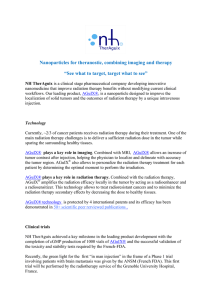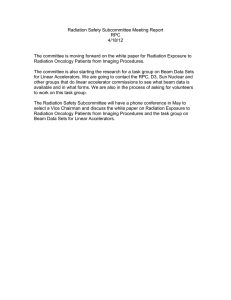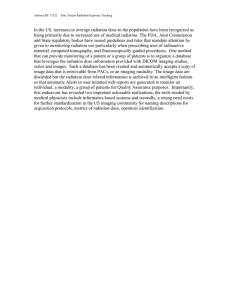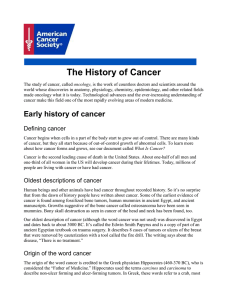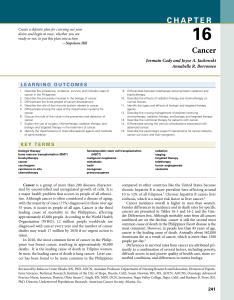Four-dimensional computed tomography (4D-CT) has been widely used in radiation... imaging moving tumors, especially in the thoracic regions. In...
advertisement
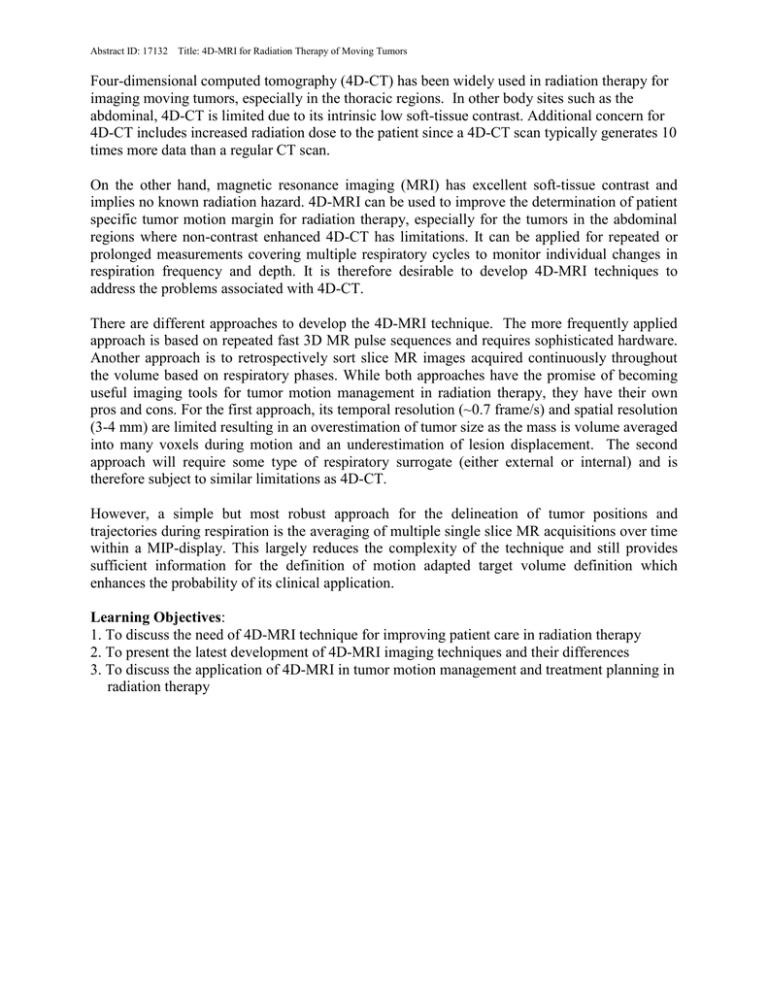
Abstract ID: 17132 Title: 4D-MRI for Radiation Therapy of Moving Tumors Four-dimensional computed tomography (4D-CT) has been widely used in radiation therapy for imaging moving tumors, especially in the thoracic regions. In other body sites such as the abdominal, 4D-CT is limited due to its intrinsic low soft-tissue contrast. Additional concern for 4D-CT includes increased radiation dose to the patient since a 4D-CT scan typically generates 10 times more data than a regular CT scan. On the other hand, magnetic resonance imaging (MRI) has excellent soft-tissue contrast and implies no known radiation hazard. 4D-MRI can be used to improve the determination of patient specific tumor motion margin for radiation therapy, especially for the tumors in the abdominal regions where non-contrast enhanced 4D-CT has limitations. It can be applied for repeated or prolonged measurements covering multiple respiratory cycles to monitor individual changes in respiration frequency and depth. It is therefore desirable to develop 4D-MRI techniques to address the problems associated with 4D-CT. There are different approaches to develop the 4D-MRI technique. The more frequently applied approach is based on repeated fast 3D MR pulse sequences and requires sophisticated hardware. Another approach is to retrospectively sort slice MR images acquired continuously throughout the volume based on respiratory phases. While both approaches have the promise of becoming useful imaging tools for tumor motion management in radiation therapy, they have their own pros and cons. For the first approach, its temporal resolution (~0.7 frame/s) and spatial resolution (3-4 mm) are limited resulting in an overestimation of tumor size as the mass is volume averaged into many voxels during motion and an underestimation of lesion displacement. The second approach will require some type of respiratory surrogate (either external or internal) and is therefore subject to similar limitations as 4D-CT. However, a simple but most robust approach for the delineation of tumor positions and trajectories during respiration is the averaging of multiple single slice MR acquisitions over time within a MIP-display. This largely reduces the complexity of the technique and still provides sufficient information for the definition of motion adapted target volume definition which enhances the probability of its clinical application. Learning Objectives: 1. To discuss the need of 4D-MRI technique for improving patient care in radiation therapy 2. To present the latest development of 4D-MRI imaging techniques and their differences 3. To discuss the application of 4D-MRI in tumor motion management and treatment planning in radiation therapy


